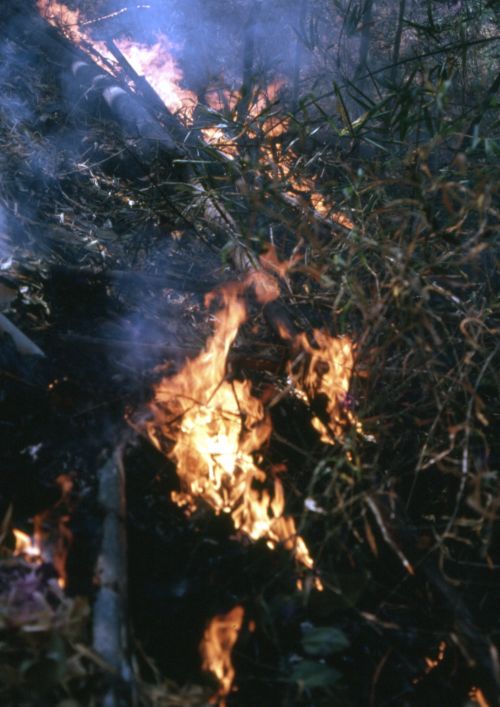The Effects of Forest Fire Protection on Plant Diversity, Tree Phenology and Soil Nutrients in a Dry Dipterocarp Forest in Doi Suthep-Pui National Park


ABSTRACT: A two-hectare plot in deciduous dipterocarp-oak forest in Doi Suthep-Pui National Park, protected against fire for 28 years, was compared with a similar, but frequently burnt forest nearby with respect to changes in the plant community, phenological variation and alteration of soil properties. To survey the tree communities, 6-m-wide transects (total length of 650m) in each site were laid out across the slope of the mountain following a bearing of 60°. To survey the ground flora, quadrats of 2m x 2m area were positioned every 30m, along the transects on alternate sides. Twenty-one quadrats were placed at each site covering 2.3% of the total transect area. The importance value percentage (IP) of trees > 10 cm DBH (diameter at breast height), species composition and diversity and evenness indices, for both tree and ground flora communities, were calculated. Seasonal variation in leafing, flowering and fruiting of trees was monitored from May to December 1996, using the crown-density method. Twenty-one 1-kg soil samples were collected from just outside each quadrat and were analyzed at the Central Soil Research Laboratory, Chiang Mai University.
Fire prevention resulted in higher tree stocking density and higher basal area compared with burnt sites. It slightly changed the species composition and eliminated Dipterocarpus tuberculatus var tuberculatus (Dipterocarpaceae). The species richness of both the ground flora and tree species were higher in the protected area, but diversity indices were not significantly different between burnt and non-burnt sites. Occurrence of evergreen or tropophylous trees was greater in the protected area than in the burnt area. Phosphorus and soil temperatures were significantly higher (p>0.05) in the burnt area, but there were no significant differences in other soil parameters between the two sites. Average soil moisture content was significantly higher (p> 0.05) in the protected area, throughout the study period, except in September. Mean community scores for senescent leaves in November and December were significantly higher in the burnt area than in the protected area. Shorea siamensis var. siamensis (Dipterocarpaceae) and Craibiodendron stellatum (Ericaceae) retained their leaves longer in the dry season or early rainy season in the protected area than in the burnt area. Trees in the burnt area had less fruit in May than in the protected area, even though their flowering scores were comparatively higher.
Overall, this study shows that fire prevention is a useful conservation management tool in deciduous dipterocarp forest for increasing tree density, increasing plant species richness and changing tree phenologies towards more favourable conditions for wild animals.
